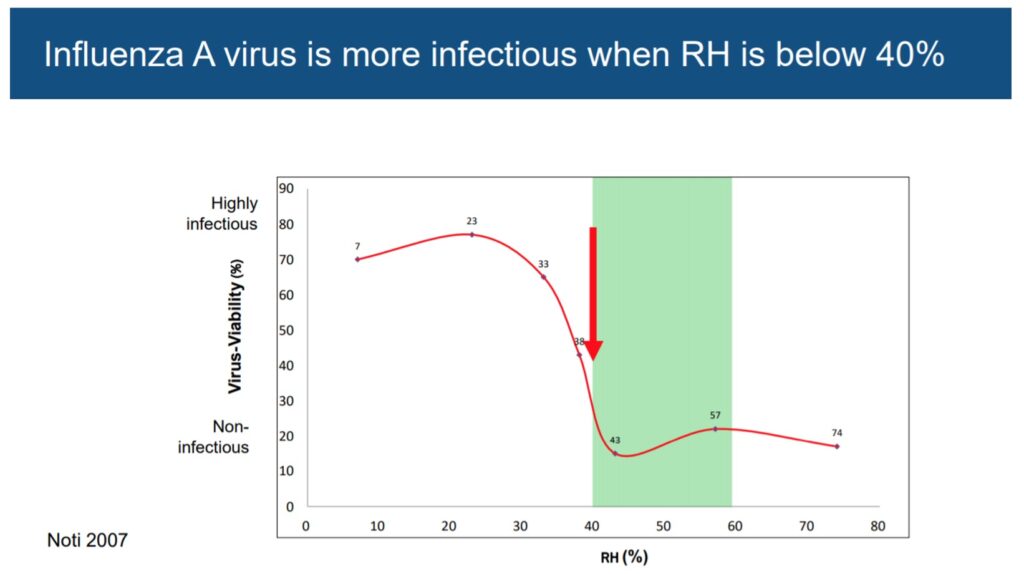COVID-19 and Indoor Air Management
- By Enviro Stewards
- Reading Time: 4 mins.
By Enviro-Stewards, reposted with permission
Coronavirus (COVID-19) can be spread through the air. Therefore, it is necessary to rethink indoor air management systems to reduce the risk of airborne transmission. Concurrently, Heating Ventilating and Air Conditioning (HVAC) is frequently a top energy consumer at most facilities. This blog outlines measures that we have implemented at our own facility to reduce the risk of transmission while reducing our footprints and operating costs.
Context
While walking our talk, Enviro-Stewards committed to reduce our greenhouse gas (GHG) emissions per employee by 80%. By 2018, through energy conservation, we reduced emissions by 73% per employee and offset twice the remaining emissions associated with our facilities (see Sustainable Waterloo Region (SWR) Report).
Furthermore, as outlined in our Practical Path to Become Climate Positive, the outcome of the engineering services that we provide were avoiding more than 10,000 tonnes of GHG for our clients and development projects for every tonne of our remaining GHG emissions.
The Challenge
Enviro-Stewards’ operations – like everyone else’s on the planet – were substantially impacted by COVID. As outlined in our conversation with the former Environmental Commissioner of Ontario (excerpt), reducing exhaust rates is an excellent way to save energy. Conversely, increasing air makeup rates (and hence air exhaust rates) results in substantial increases in energy consumption and associated environmental footprints. What other avenues are available to reduce risk of COVID transmission while maintaining energy efficiency?
Get seasonal fruit to your home or office
Our Solution to Reduce Risk of COVID Transmission & Maintain Energy Efficiency
As a component of our office upgrades, Enviro-Stewards installed an integrated living wall in our ventilation system. By drawing our office air through the wall on its return journey to the HVAC system, the plants have been able to remove enough CO2 to reduce the amount of makeup air required by our office by about 97%.
SWR compared the quality of our office air to an office of identical size on the floor below us that uses a conventional HVAC system that takes 10% fresh air (and heats or cools it) 100% of the time. SWR’s assessment found that our indoor air quality (IAQ) contained:
- 25% and 37% fewer particulates (PM2.5 and PM10)
- 16% less CO2 (even though we were taking 97% less outside air)
- a lower temperature (due to our temperature set-point)
- 24% more humidity (due to the air picking up moisture from the plant wall)

From a COVID transmission reduction perspective, fewer air particulates (indicating particulate removal) and higher humidity are both likely to reduce transmission.
Although COVID transmission vs humidity research is not yet available, the chart below illustrates how higher levels of relative humidity are associated with substantially lower infectiousness of the Influenza A virus.
Source: Presentation by Stephanie Taylor, M.D., M. Arch., ASHRAE DL, Harvard Medical School, Primary Care
Similarly, COVID survival vs probiotic bacteria research is not yet available. However, previous research with SARS and Poliovirus indicates that beneficial bacteria (such as those that would be in the root zone and re-circulation water of a living wall) are likely to deactivate viruses much faster than clean water.
Get seasonal fruit to your home or office
Beyond this, Enviro-Stewards installed tighter (MERV-13) filters to remove even more particulates from the air circulated in the office. As tighter filters can reduce air flow, we measured the air flow from our system before and after replacing our original filters with the MERV-13 filters. The air flow rate with the fresh MERV-13 filters was 4.7% lower than the re-circulation flow rate with fresh MERV-6 filters. However, this decrease in flow is less than the decrease in flow of exhausted MERV-6 filters (5.6% less than the flow rate with fresh MERV-6 filters). Therefore, the decrease in flow for the MERV-13 filters can be accommodated by our existing rooftop unit (however, we may need to replace the filters more frequently).
A slightly lower air circulation rate will not adversely affect the HVAC unit’s operation during the heating season. If (hopefully not) COVID extends into next summer, we will recheck the air flow of the exhausted MERV-13 filters to ensure that the flow has not decreased sufficiently to adversely impacted the cooling coils of the refrigeration portion (such as allowing them to frost up). If so, we will replace the filters with fresh filters.
Airborne transmission of COVID presents a profound health challenge as well as a potential environmental impact. Creative measures are needed to reduce the risk of transmission while conserving energy efficiency.
Get seasonal fruit to your home or office
This blog outlines measures implemented at our own facilities. Specifically, an integrated living wall and tighter filters (combined with social distancing and mask wearing in common areas) that are likely to substantially reduce the risk of COVID transmission while maintaining energy efficiency.
Each facility has site specific constraints that need to be considered when formulating an action plan. A great place to start is an assessment of system capacity and enhancement opportunities associated with the existing systems. This can prepare the baseline for design and implementation of measures to reduce the risk of COVID transmission while practically & affordably journeying to net zero carbon emissions and beyond (i.e. to net climate positive).



